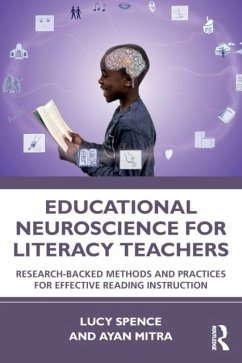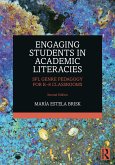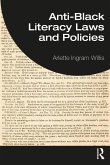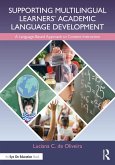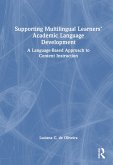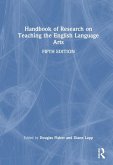Bridging the world of reading instruction and applied cognitive neuroscience, this book presents research-backed reading instructional methods and explains how they can be understood through the lens of brain processes.
Dispelling myths about neuroscience, Spence and Mitra explore how brain-based research informs literacy research in a way that is clear and accessible to pre-service teachers. Chapters address theories of reading, social-emotional learning, phonological processes, embodiment, multilingualism, reading comprehension, and more. Featuring examples of instruction and consistent "Did you know?" and "Food for thought" sections, readers will come away with a greater understanding of the reading brain and how neuroscience can facilitate effective instruction.
Delving into the extent to which neuroscience can underpin reading research, this text is ideal for pre-service teachers, educators, and students in the fields of language arts and literacy, as well as cognitive neuroscience.
Dispelling myths about neuroscience, Spence and Mitra explore how brain-based research informs literacy research in a way that is clear and accessible to pre-service teachers. Chapters address theories of reading, social-emotional learning, phonological processes, embodiment, multilingualism, reading comprehension, and more. Featuring examples of instruction and consistent "Did you know?" and "Food for thought" sections, readers will come away with a greater understanding of the reading brain and how neuroscience can facilitate effective instruction.
Delving into the extent to which neuroscience can underpin reading research, this text is ideal for pre-service teachers, educators, and students in the fields of language arts and literacy, as well as cognitive neuroscience.
"An impressive read! This book bridges between research-substantiated explanations of effective literacy instruction and the current neuroscience evidence on reading processes and development. Spence and Mitra have achieved what others have only envisioned, conjoining neurobiology and classroom sociality for a robust explanation of robust literacy engagement."
--George G. Hruby, Collaborative Center for Literacy Development, University of Kentucky, USA
"[T]his book provides an accessible, useable summary of important research findings about how children learn to read, and about how adults can support and teach this process in socially, emotionally, culturally, linguistically and cognitively appropriate ways. From complex neuroscientific data to practical implications for diverse K-12 classroom contexts, Spence and Mitra take educators on a journey into the science and practice of teaching reading to help young people become literate in the full sense of the term."
--From the Foreword by Mary Helen Immordino-Yang, University of Southern California, USA
--George G. Hruby, Collaborative Center for Literacy Development, University of Kentucky, USA
"[T]his book provides an accessible, useable summary of important research findings about how children learn to read, and about how adults can support and teach this process in socially, emotionally, culturally, linguistically and cognitively appropriate ways. From complex neuroscientific data to practical implications for diverse K-12 classroom contexts, Spence and Mitra take educators on a journey into the science and practice of teaching reading to help young people become literate in the full sense of the term."
--From the Foreword by Mary Helen Immordino-Yang, University of Southern California, USA

